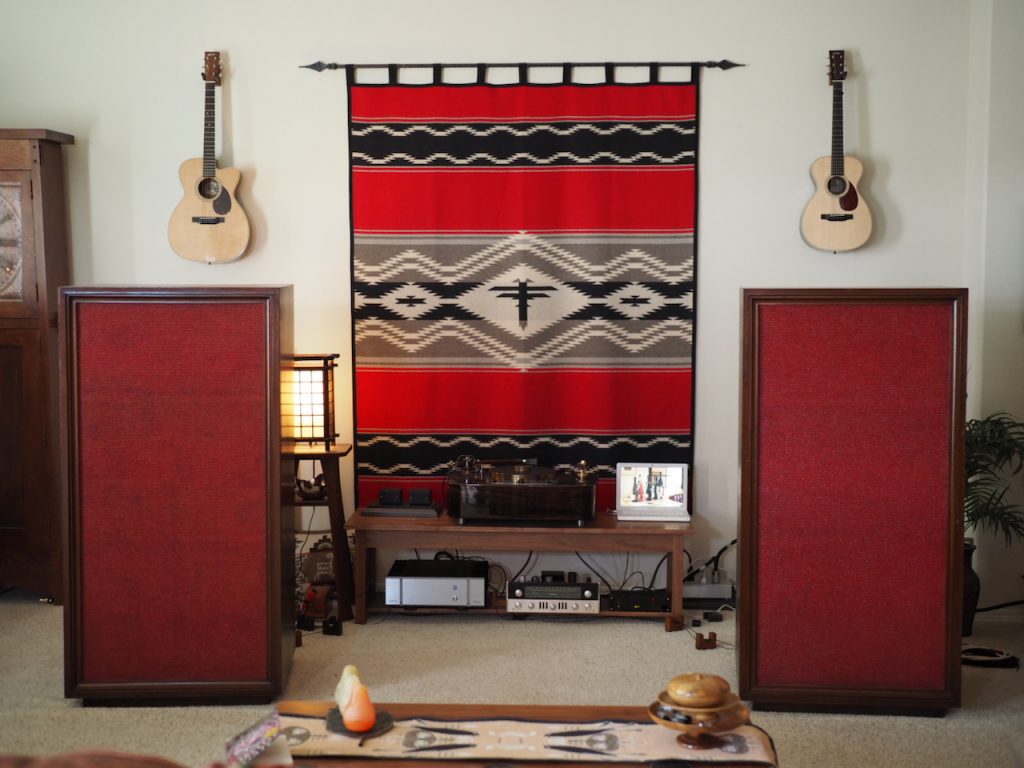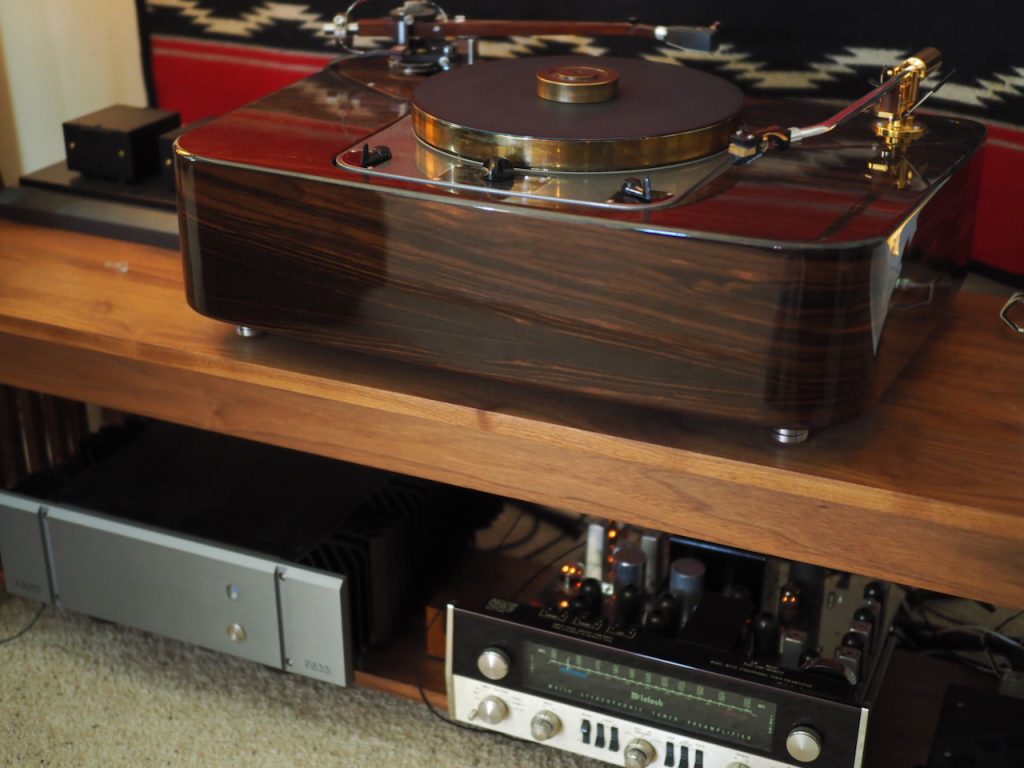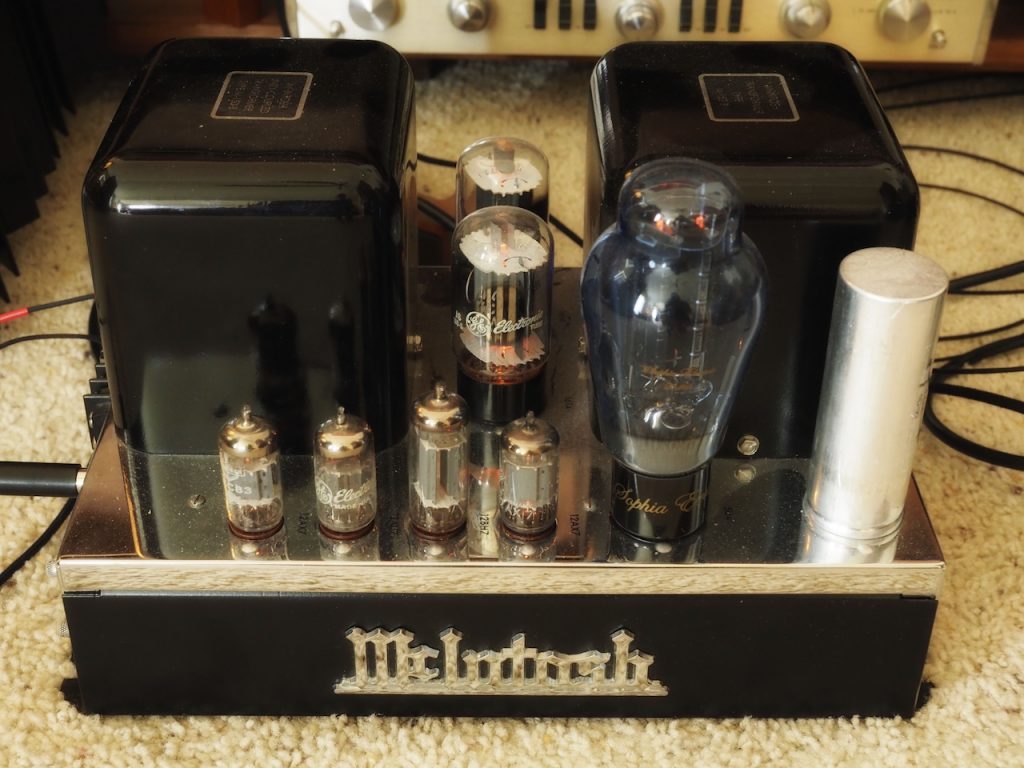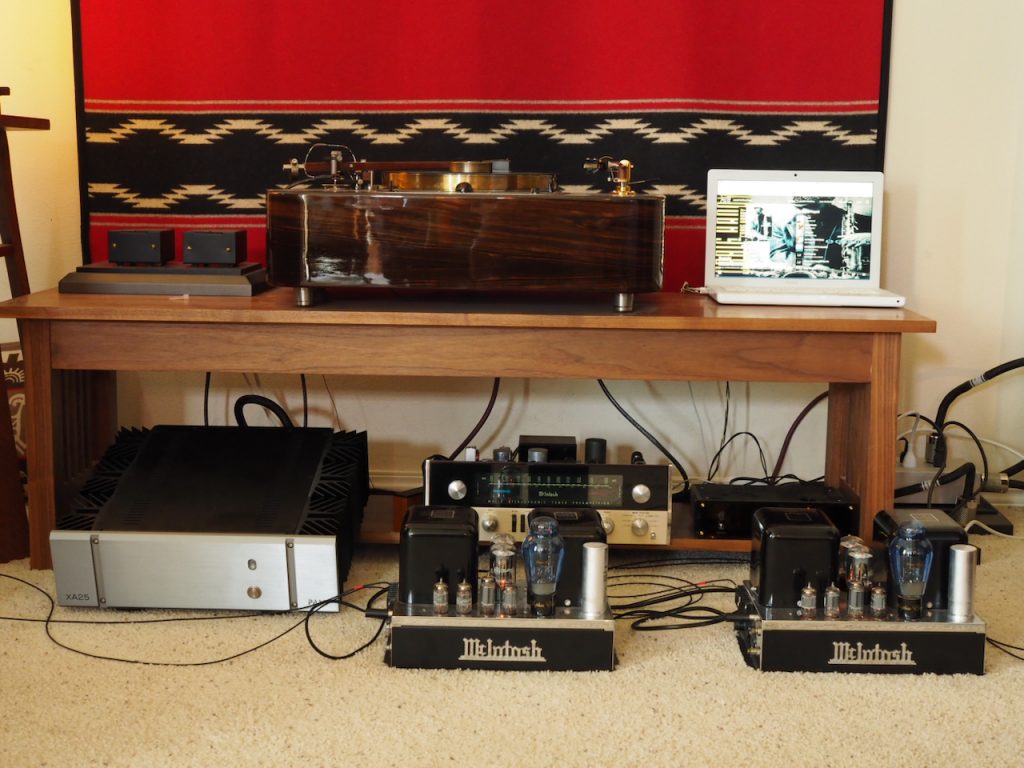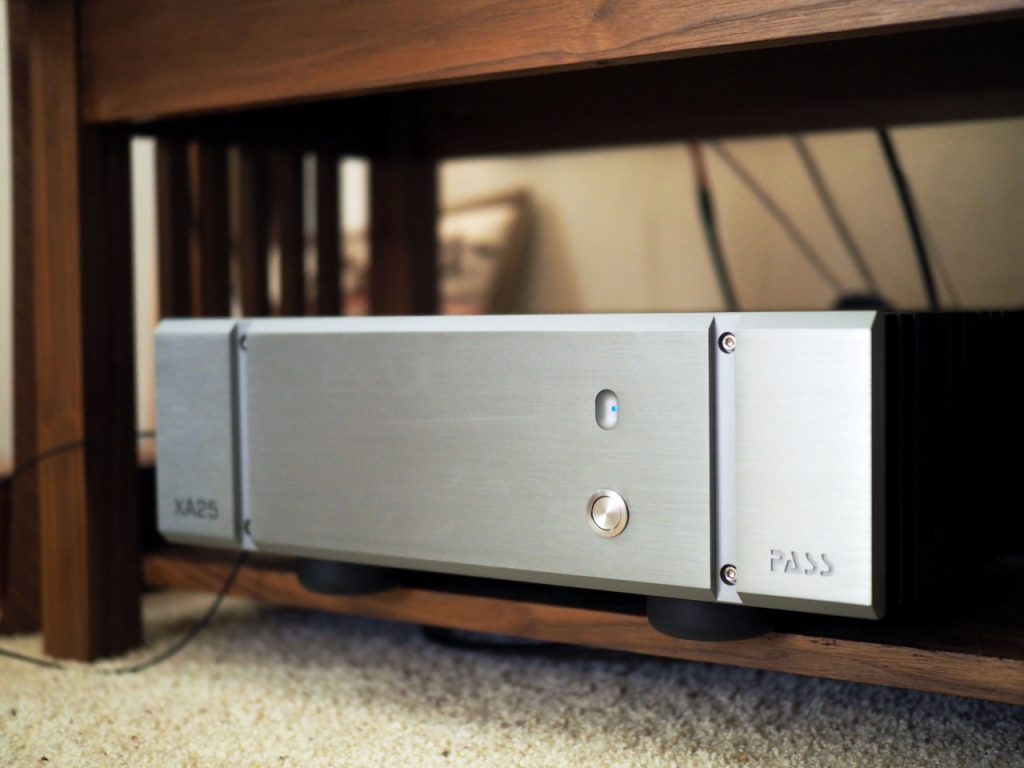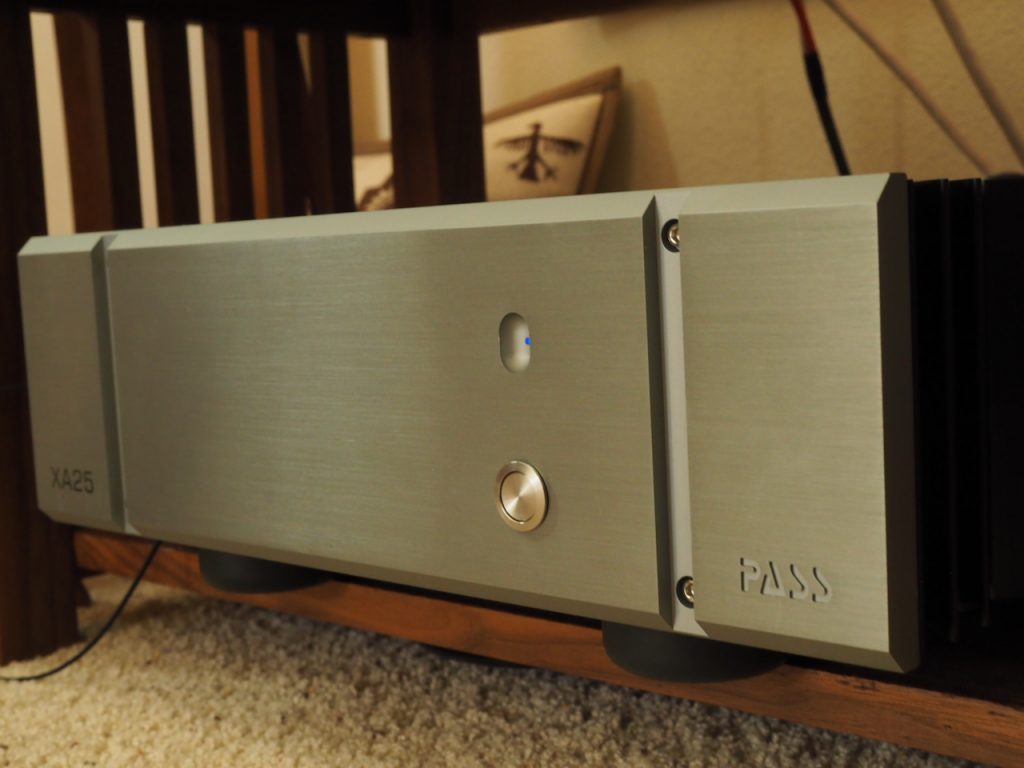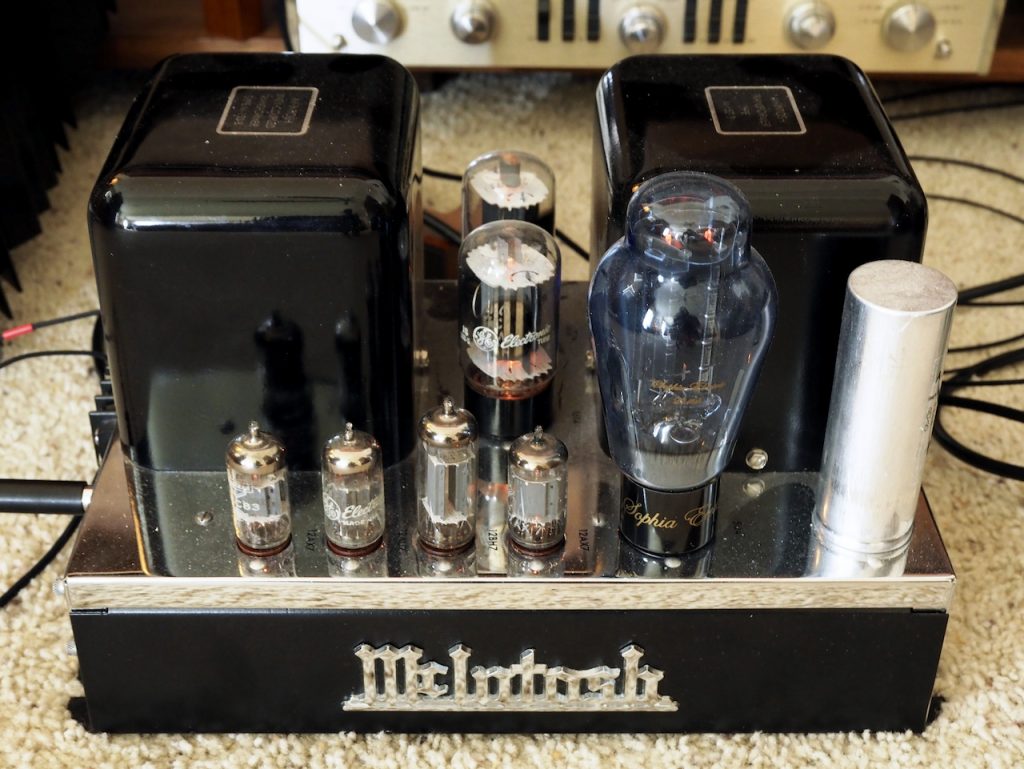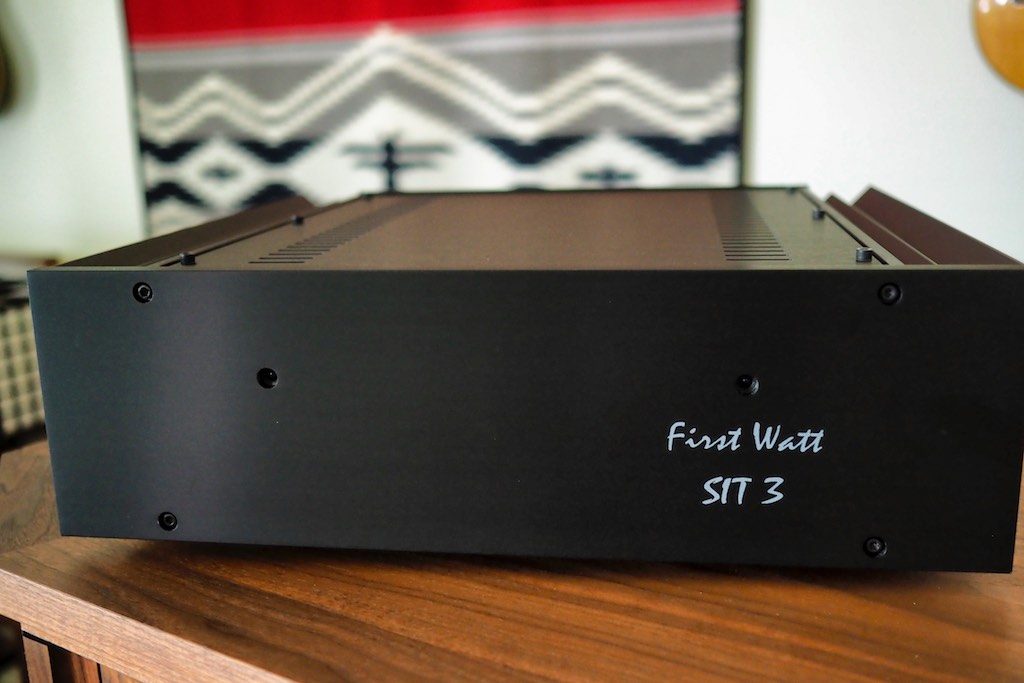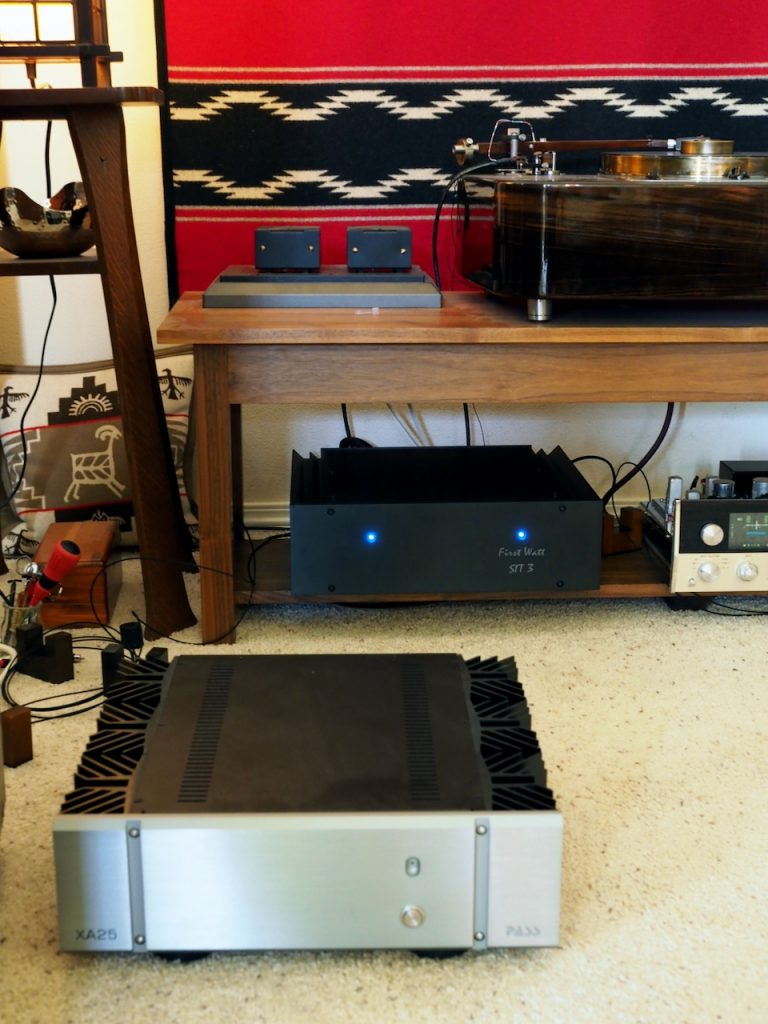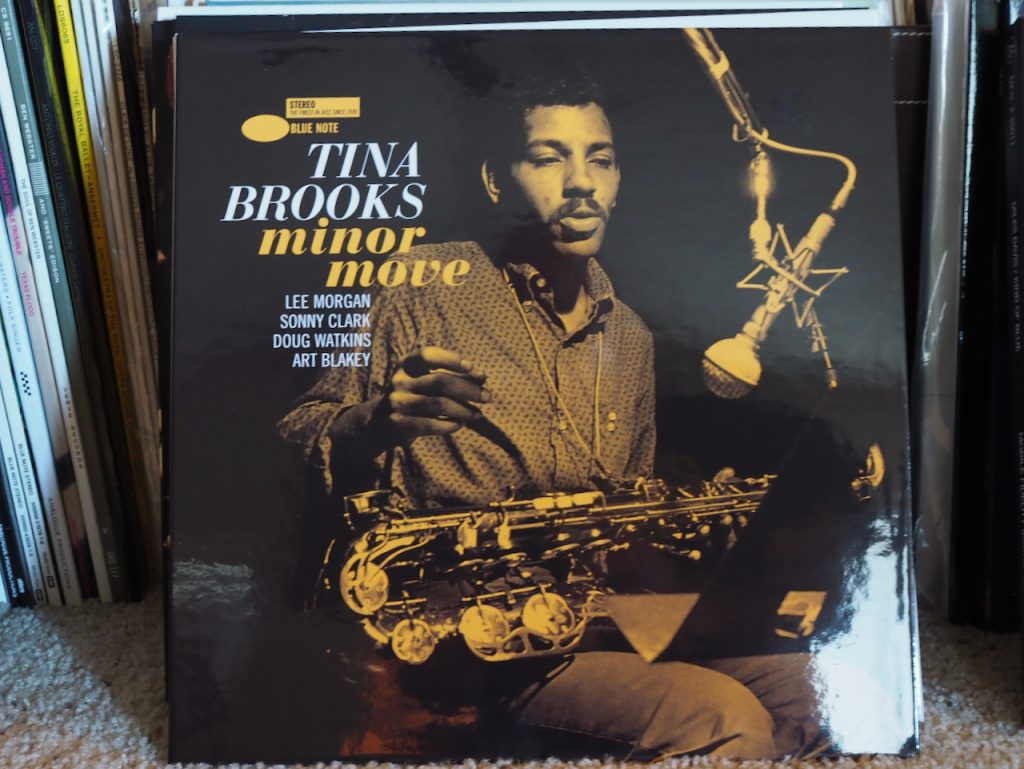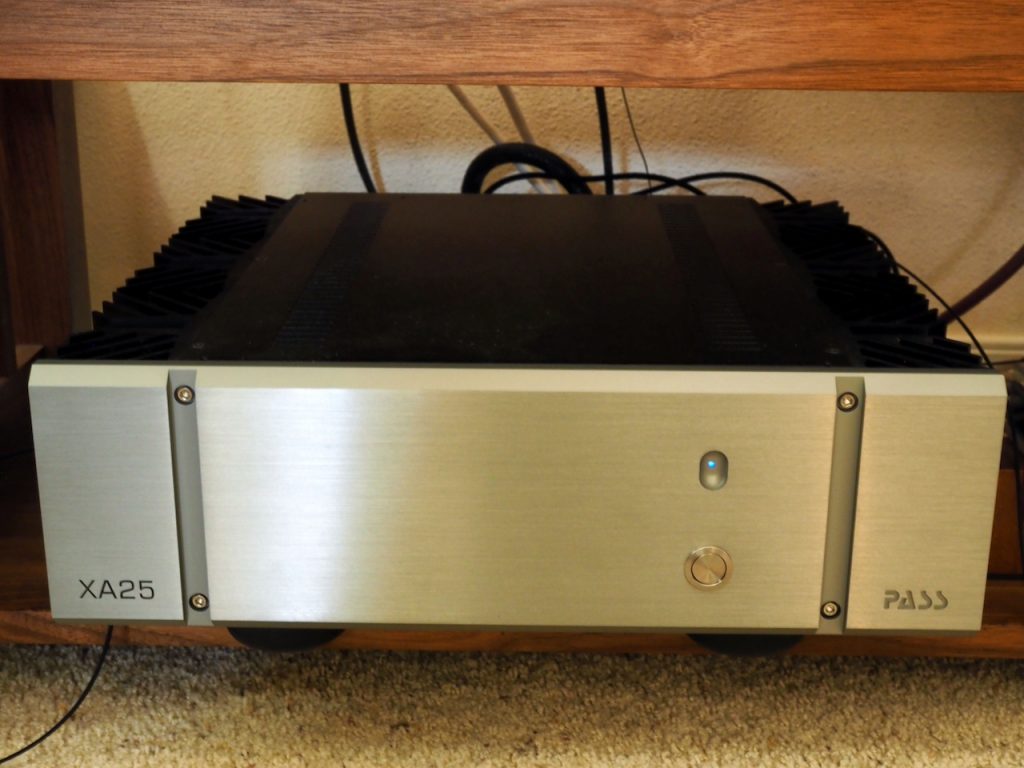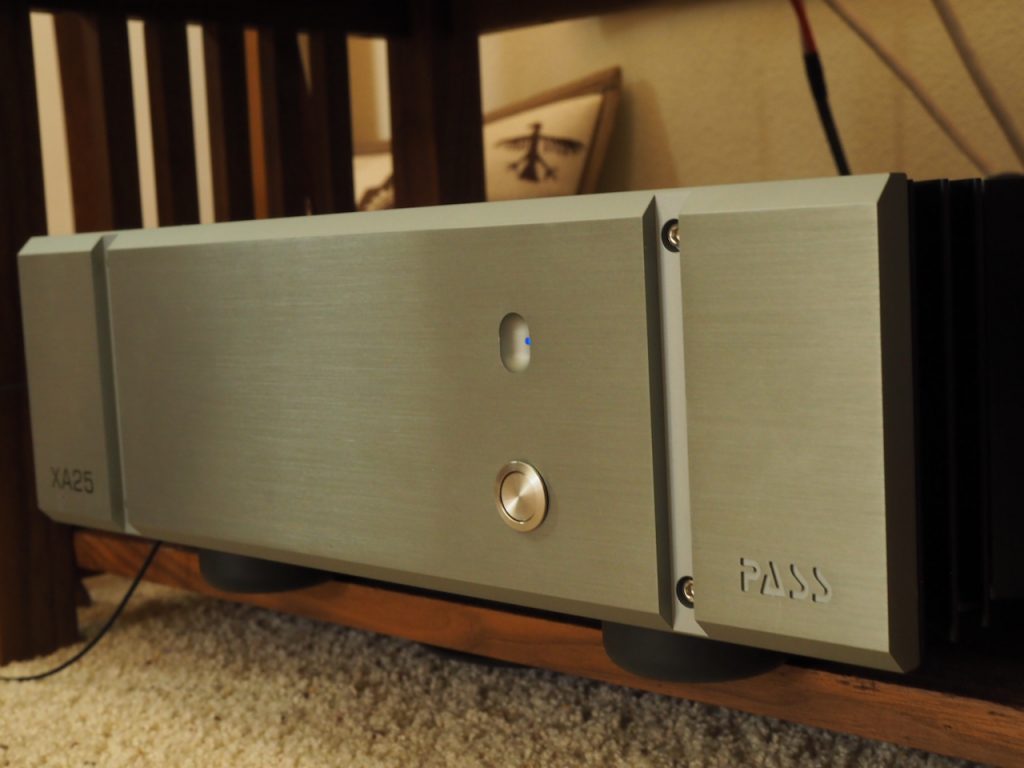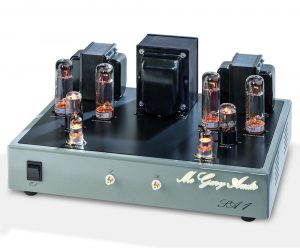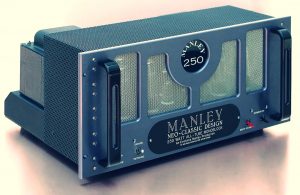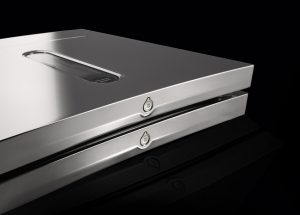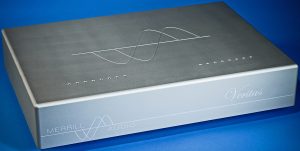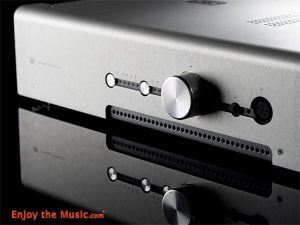The Combined Musicality & Visuospatial Performance of the Pass Labs XA25
Ok, now that we've taken a look at performance of the Pass Labs XA25 in reductionist terms with respect to musicality & visuospatial performance as a collection of attributes, let us now do the opposite, and explore how well the XA25 integrates all of those attributes in the holistic context of sounding & feeling like a live music experience in the way it delivers an emotional response from listening to the recorded music.
Regarding emotional response, researchers who study the neurobiology of music have found that certain elements of musicality and visuospatial presentation stimulates emotional responses in the brain.
Their research results suggest that a home music system that can play at loudness levels realistic to the music, is realistic in dynamic terms, and can realistically portray timbral textures, tempo, and beat, will be more emotionally engaging and musically satisfying than a home music system that can't do those things as well. Note that those are all aspects of musicality.
Also, researchers have found that there is a brain connection that does processing for both visuospatial artifacts and transposing melodies, and when that brain region is stimulated by the processing of the visuospatial information in recorded music, it can contribute additional pleasure to the music listening experience, increasing the emotional impact of listening to music.
So ideally, I want a component that can make any recorded music I want to listen to a pleasurable and reasonably believable experience in terms of musicality, and if the music happens to be well-recorded in terms of visuospatial information so that it adds to my listening enjoyment, so much the better.
The combination of the muscularly powerful Pass Labs XA25 Class A stereo amplifier with my sensitive Duelund-ized "Stokowski" Altec's integrates and pushes all of the musicality and visuospatial buttons in such a grand way that every listening experience I've had with them has been remarkable in the way it connected me to the emotional impact of the music.
It didn't matter if I was listening to jazz, folk, rock, blues, classical, country, or what have you, or whether it was an audiophile spectacular recording or just an average recording, it's the best and most intense emotional presentation of musical performances I've ever experienced from a hifi system, ever, period.
The Pass Labs XA25 Class A stereo amplifier is one heck of a good amplifier!
Comparing the Pass Labs XA25 to the Vintage McIntosh MC30 Monaural Amplifiers
You've no doubt noticed Nelson's references in this article—and my First Watt SIT-3 article (HERE)—about how the solid-state MOSFETs, JFETs, SITs, etc., he has implemented in his amplifier circuits perform compared to single-ended-triode (the SIT-3) or single-ended-pentode circuits (the Aleph 3), so I thought it would make for an interesting listening comparison to compare my favorite push-pull vacuum-tube amplifier from history—the formidable vintage McIntosh MC30 6L6GC push-pull monaural amplifiers (1954-1962)—to Nelson's Pass Labs XA25 Class A push-pull stereo amplifier.
Both amplifiers have approximately the same nominally rated output into 8 Ohms (25 watts for the XA25 and 30 watts for the MC30), as well as large power reserves up to the point where they clip into 8 Ohms (80 watts for the XA25 and 60 watts for the MC30s), and both are easily capable of driving difficult loudspeaker loads.
Recently, during a visit by fellow music and audio enthusiast Paul James from Australia, Paul, my buddy Doc Leo, and myself did a listening comparison between the Pass Labs XA25 and my restored & hot-rodded vintage McIntosh MC30 monaural amplifiers in the hifi system used for this article.
It had been ages—like a year—since I've had the pleasure of hearing my vintage monaural McIntosh MC30 amplifiers in my main music listening system, and I hadn't yet had a chance to listen to them with my Duelund-ized Altec's, so I was really glad that Paul - being a major vacuum tube enthusiast—suggested we give them a listen in comparison to the Pass Labs XA25.
What a grand adventure to engage in, and we had a ball listening to these two very different approaches to audio amplification!
I think that both of these amplifiers are examples of the best of their kind, with the Pass Labs XA25 representing a pinnacle of solid-state Class A push-pull design in a lower-powered amplifier, and the vintage McIntosh MC30 monaural amplifiers are long time favorites of mine as high-performance examples of Audio Golden Era push-pull valve amplifier design.
The main difference power-wise between these amplifiers is that when driving the 16 Ohm "Stokowski" Altec's with the Duelund CAST tinned-copper crossovers, the Pass Labs XA25 drops to about 40 watts at clipping into 16 Ohms, while the vintage monaural McIntosh MC30s have 16 Ohm taps on their transformers that allows them to maintain their 60 watts at clipping into 16 Ohms.
As I discussed in my "Duelund-Altec Project - Dare to Dream!" feature article at Positive Feedback, most people don't usually connect the terms "vintage" with "high-performance," assuming instead that these two terms must be mutually exclusive.
After all, don't the latest models of hifi offerings being produced for audio enthusiasts today represent the maximum attainable performance by leaps and bounds over the vintage equipment?
Historically speaking, the performance peak for recording quality & software quality, amplification quality, and loudspeaker quality occurred during the period of 1920 to 1960—the apogee of the vacuum tube era—with incremental improvements or even declines in performance since then.
That's why you see ultra-talented designers like Nelson Pass referring back to the best of those Audio Golden Era vacuum tube and amplifier designs as a benchmark of comparison for sound quality in his latest leading-edge solid-state designs.
Having owned many single-ended-triode, single-ended-pentode, and push-pull vacuum tube amplifiers over the years, in their overall performance from a musicality and visuospatial perspective—and from the perspective of flexibility in powering loudspeaker designs of moderate sensitivity—all have come up short of my vintage McIntosh MC30 monaural amplifiers.
Certainly, some of the best of the Audio Golden Age vacuum tube designs—like my hot-rodded monaural McIntosh MC30s—are fantastic, but how do they compare to a current state-of-art solid-state design like Nelson's Pass Labs XA25 Class A push-pull power amplifier, given competitive solid-state designs didn't even exist during the peak of valve amplifier performance developments in history?
As an aside, I would say that the peak of performance development for solid-state amplification is occurring now, with designs like the Pass Labs XA25 and First Watt SIT-3 being a couple of examples of the best in leading-edge solid-state amplifier performance.
With the Pass Labs XA25 Class A solid-state stereo amplifier and the vintage McIntosh MC30 monaural amplifiers being excellent examples of performance apogees in their respective current and vintage periods of performance advancements, how do they compare in terms of absolute performance in today's terms?
My observations are that both Pass Labs XA25 Class A solid-state push-pull stereo amplifier and the vintage McIntosh MC30 push-pull monaural amplifiers deliver extremely high levels of musicality and visuospatial performance, both are capable of providing a tremendous dose of emotional involvement from the music, and both can drive a wide range of loudspeakers.
The Pass Labs XA25 stereo amplifier is extremely transparent, resolving, and distortion free, from the highest highs to the lowest lows. It easily provides the full spectrum of dynamic performance, whether it was on the subtle gradations of pianississimo, or the "hang onto your hat" blasts of fortississimo, even at live-like sound pressure levels (SPLs).
The XA25 also sounds incredibly powerful in contradiction to its nominal power rating of 25 watts (due to the formidable amount of power it can produce before clipping), and it can provide incredible bass slam when it's in the music, and yet it possesses comparable organic musicality and visuospatial characteristics that I normally associate with my favorite push-pull vacuum tube amplifiers like my vintage McIntosh MC30 monaural amplifiers, or the directly-heated singled-ended triodes (DH-SETs) and single-ended-pentodes (SEPs) that I have owned in the past.
The vintage McIntosh MC30 monaural amplifiers are known for their 'spooky real' presence, their big, colorful, and dramatic presentation of music, and their ability to infuse music with deep color tones and rich timbral textures that makes the music sound vibrant and alive. With the Yazaki-san suggested modifications that my friend Ron Barbee installed, it enhanced the sound of my MC30s even further, with a more elegant, rich, utterly natural, and timbrally gorgeous presentation, as well as a liquid, flowing, mesmerizingly musical overall presentation.
First off, I should tell you that I could easily live happily with either the Pass Labs XA25 Class A push-pull solid-state stereo amplifier or the vintage McIntosh MC30 monaural amplifiers powering my loudspeakers (or preferably both!), they are both brilliant amplifiers.
Both of these amplifier designs—one modern and one vintage—sound extremely good, but differ in the way they combine their strengths in musicality, visuospatial performance, and emotional impact.
The Pass Labs XA25 is more resolving and transparent than the vintage Mac MC30s, which you can hear in more detailed and nuanced timbral textures, additional body to images, and the huge sense of space in the soundstage that it is capable of providing.
Subjectively, the XA25 feels much more powerful than the MC30s, even though it's not on the 16 Ohm Altec's, and it has greater dynamic ability across the dynamic spectrum, with impressive bass performance.
The vintage MC30s have a more liquid and flowing sound than the XA25, the tones seem to decay a little longer in time, which gives a little more relaxed natural feel to the music.
The XA25 is a little more to the exciting and engaging side of life, with the MC30s being a little more to the colorful and romanticized side of life.
If you boil it down to a single performance aspect, the main difference between these amplifiers is that the vintage Mac MC30s play more with what musicians call legato—playing in a smooth and flowing manner without breaks between notes – than does the Pass Labs XA25, however that legato-like presentation in the MC30s is achieved at the expense of the transparency and resolution the XA25 offers.
Vacuum tube amplifiers like the vintage Mac MC30s tend to excel at emphasizing this sort of liquid and flowing feel in music. The solid-state Pass Labs XA25 is not quite as liquid and flowing as the vintage MC30s, but it is not that far off either.
Hard-core vacuum tube amplifier enthusiasts like my audio pals Paul and Doc Leo weight this legato-style of liquidity and flow very highly, and so preferred the more liquid and flowing nature of the MC30s to that of the XA25.
However, I also am a vacuum tube enthusiast, but I'm also an enthusiast of solid-state designs with superb musicality like the Pass Labs and First Watt designs, and in this case—even in spite of a slight diminishment of liquidity and flow with the XA25 compared to my MC30s—I still preferred the XA25 on my Duelund-ized Altec's to the MC30s.
So, the positives for the Pass Labs XA25 are its impressive level of performance, which is at the leading-edge of solid-state design, and I think the XA25—like the First Watt SIT-3—represent what I consider pinnacles of solid-state design, to the extent that I think the Golden Age for high-performance solid-state amplifier designs is occurring right now, and as such the XA25 represents the birth of a classic solid-state amplifier that can go toe-to-toe with pretty much anything out there from any period of time in history in terms of musicality, visuospatial performance, and emotional impact.
So, while the XA25 is competitive with the best vintage vacuum tube designs in terms of its musicality, it excels beyond them in its overall visuospatial performance, and its ability to deliver emotional impact is superb.
Other pluses are that the XA25 doesn't require expensive vacuum tubes to keep running, it's going to be totally reliable for the long term, and at $4900 it's a relative bargain for its superb level of performance.
Comparing the Pass Labs XA25 Push-Pull Stereo Amplifier to the First Watt SIT-3 Single-Ended Stereo Amplifier
I thought you might enjoy hearing a little about how the Pass Labs XA25 Class A push-pull amplifier compares to the highly-regarded First Watt SIT-3 single-ended stereo amplifier (my full review of the SIT-3 can be read HERE).
Here's an summary excerpt from my review of the First Watt SIT-3:
"Sonically, the First Watt SIT-3 demonstrated very impressive performance in terms of resolution, imaging, soundstaging, and in recovering the acoustic space of the recording venue, as well as the "acoustic envelope" around individual instruments in DH-SET fashion. I don't think I've ever heard an amplifier resolve as much musical & recorded nuance in such a natural fashion as the SIT-3 does, and I was constantly hearing musical nuance that I'd never heard before in my music."
"Musically, the First Watt SIT-3 provided a very satisfying portrayal of natural sounding timbral textures, with excellent resolution of tone color, as well as an articulate, nuanced, and vivid portrayal of melodies and harmonies. The SIT-3's rhythmic abilities were impressive, with beat delivered as physically engaging, along with highly resolved bass frequencies that my tube amps can't match. From the lowest lows to the highest highs that my loudspeakers could produce, the First Watt SIT-3 provided a level of resolution, timbral nuance, and musical articulation that was truly wondrous. Tempos and changes in tempos were easily discerned, adding to the emotive feel of the music."
Well, most notably, the Pass Labs XA25 Class A push-pull stereo amplifier is much more powerful and authoritatively dynamic than the First Watt SIT-3, making the XA25 more relevant to a wider variety of medium sensitivity loudspeakers.
So you get the idea, the First Watt SIT-3 is a superb amplifier, but power-wise it is more like a 300B amplifier on my 16 Ohm Altec's (about 9 watts output into 16 Ohms), and it really needs Altec-like sensitivity to get the best out of it, so it is more narrowly targeted at listeners with higher-sensitivity loudspeakers.
The First Watt SIT-3 is more like my vintage McIntosh MC30s in terms of legato-style liquidity and flow, being smooth and refined, yet it also possesses superior resolution and transparency than the MC30s, providing a listening experience with lots of natural sounding nuance. The SIT-3 is a very charming and musical amplifier, a little to the laid-back side of life compared to the XA25, and it does everything superbly.
The Pass Labs XA25 has a more dynamic sound and exciting feel to it, whereas the First Watt SIT-3 is more liquid, nuanced, luxurious, and refined sounding.
In terms of bass tonality, on the new Blue Note Tone Poet release of Tina Brooks' Minor Move, for example, I think the SIT-3 captures what an upright bass sounds like in jazz a little more naturally than does the XA25, which emphasizes the bass more.
However, in rock & roll that punchy & muscular bass of the XA25 really puts feeling into the beat, making the music thrilling and exciting to listen to.
Yes, the Pass Labs XA25 Class A push-pull stereo amplifier and the First Watt SIT-3 are both incredibly good—but different—amplifiers, and I feel ridiculously fortunate and privileged to have them both here at the same time to tell you about.
Well, I hope that gives you a little insight into these two high-performance amplifiers, which incidentally, are both priced very fairly for their lofty levels of performance.
Summary and Conclusions
The Pass Labs XA25 Class A push-pull stereo amplifier has been very popular with audio enthusiasts since its release, which is easy to understand, as the Pass Labs XA25 sounds great, is extremely well built, is reliable, is inexpensive to maintain (no costs beyond the AC it consumes), is relatively affordable ($4900 USD), represents huge value for its price, and it is a powerful and compact amplifier that is able to easily drive a wide variety of loudspeakers, from my high-sensitivity vintage Altec's to much less sensitive contemporary designs.
The Pass Labs is competitive with the various single-ended and push-pull vacuum tube amplifiers I have owned over the years in terms of what they do best, superb musicality along with beguiling visuospatial performance prowess.
The rather utilitarian appearance of the Pass Labs XA25 stereo amplifier's exterior doesn't really hint at the exceptional performance potential this amplifier offers. You are not paying for a piece of audio jewelry with the Pass Labs XA25, you are paying for truly superb performance at a real-world price, in a well-designed and executed amplifier that will reliably take you into your musical future.
I mentioned it earlier, but I want to reiterate that the Pass Labs XA25 amplifier has been my amplifier of choice for my Duelund-ized "Stokowski" Altec loudspeakers during its stay, it's particular combination of power, musicality, visuospatial performance, and its ability to convey the emotional impact of the music just bowled me over in my listening sessions. It really is an extraordinary amplifier.
I enthusiastically recommend the Pass Labs XA25 stereo amplifier for everyone who loves music and the hifi hobby, I can't imagine any of you being disappointed with this amplifier, it is a true gem and destined to become a classic which other amplifiers are judged by.
I would like to thank Nelson Pass and Bryan Stanton for making the Pass Labs XA25 Class A push-pull amplifier available to me to write about for you. Thanks guys!
As always, thanks for stopping by Positive Feedback to read this article, and may the tone be with you!
XA25 Class A amplifier
Retail: $4900
Pass Labs




